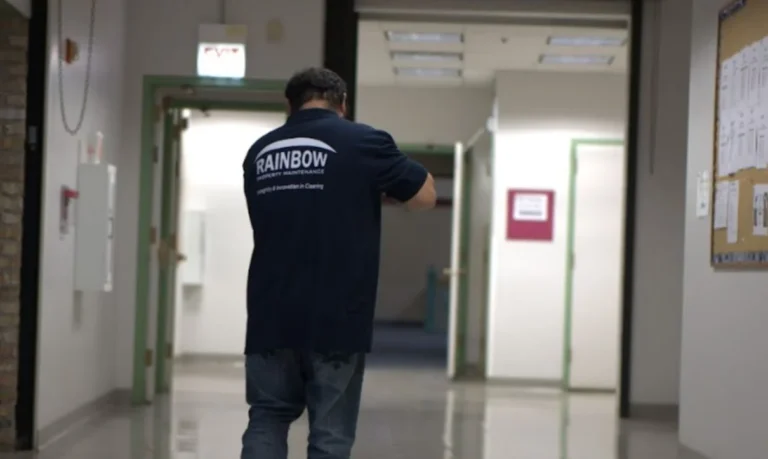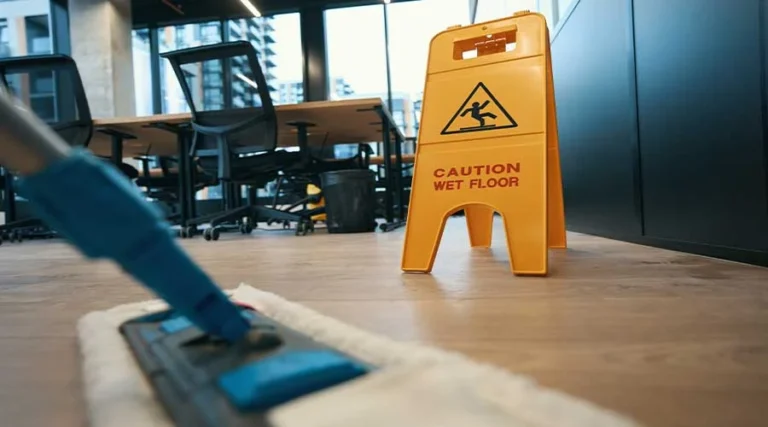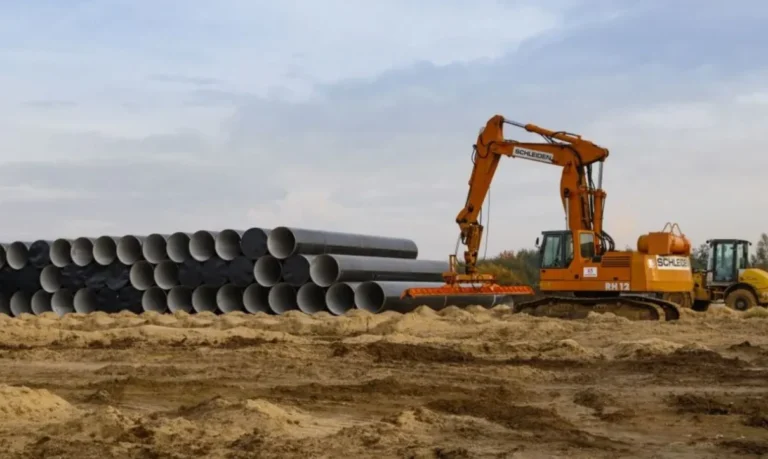Ensuring Consistent Performance from Vendors
Facility managers rely heavily on third-party vendors to deliver services like janitorial, landscaping, maintenance, and security. But when vendors underperform or prove unreliable, it wreaks havoc on operations and the tenant experience.
Missed cleaning visits lead to unsanitary conditions. Lapses in outdoor work create shabby curb appeal. Deferred maintenance causes mechanical breakdowns. Lax security exposes occupants to risks. Deferred or inadequate equipment maintenance causes increased mechanical breakdowns that disrupt building functions and comfort for tenants. The compounding impact of these types of lapses underscores why reliable vendor performance is crucial for smooth facility operations and keeping tenants satisfied.
To prevent unreliable vendors from undermining property success, facility managers should focus on:
- Robust vendor selection processes
- Performance monitoring with clear KPIs
- Contingency plans that provide backup support
The Risks of Unreliable Vendors
Facility managers face numerous risks from unreliable vendors that can undermine operations. Poor planning and understaffing lead to failures in meeting service commitments like work orders. Deficient training or weak oversight results in mistakes that can lead to the project being redone completely.
Priority conflicts, equipment issues, supply shortages, and staff instability also disrupt vendors’ ability to deliver consistent service. When vendors grapple with these myriad issues, their performance suffers – leading to chronic underperformance or subpar service that creates headaches for facility managers dependent on these third-party providers for core operations. A proactive risk mitigation strategy is essential to avoid the pitfalls of unreliable vendors.
Before exploring solutions, it’s worth examining common causes of vendor performance issues:
Poor planning – Vendors lacking organized schedules overwhelm staff and fail commitments.
Understaffing – Keeping staff levels too low prevents keeping up with expected workloads.
Deficient training – Workers without proper training make mistakes requiring rework.
Weak oversight – When frontline work lacks supervision, quality and follow-through drop.
Improper resource allocation – Spreading resources thinly across too many sites creates failures.
Late notifications – Last-minute notices from facility managers make scheduled work difficult.
Priority conflicts – When vendors juggle competing urgent requests, some fall through the cracks.
Equipment issues – Inadequate equipment maintenance leads to breakdowns and stalling work.
Supply shortages – Spotty inventory and supply chain issues prevent proper materials from finishing jobs.
Staff instability – Frequent employee turnover disrupts cohesion and skill building.
When vendors grapple with these issues, their performance becomes inconsistent at best or chronically subpar at worst. Proactive mitigation is needed to protect the facility.
Robust Selection Processes
Prudent facility managers will assess criteria such as vendors’ proven experience, referrals, staffing adequacy, operational processes, safety records, financial stability, and cultural alignment. Evaluating vendors against these standards will help minimize the likelihood of partnering with an unreliable vendor.
The first line of defense is careful vetting and selection of vendor partners using criteria like:
Experience – Seek established vendors with long track records in the required services. Review client lists and years in business.
Reputation – Ask peers for referrals to reliable providers they’ve used successfully. Research online reviews.
Resources – Assess if the vendor has ample staffing, equipment, and inventory to meet demands.
Processes – Review operating processes like staff scheduling, work dispatching, quality control. Avoid chaotic scenarios.
Safety record – Ensure the vendor has solid safety practices and training to prevent onsite accidents.
Financial health – Evaluate financial statements to determine their stability and ability to invest in growth.
Culture fit – Gauge through interviews if the vendor’s values and priorities align with the facility’s service philosophy.
Checking these indicators minimizes selecting vendors destined to disappoint.
Performance Monitoring through KPI Tracking
Once a vendor is selected, clearly defined key performance indicators (KPIs) allow proactive monitoring to catch issues early. Clearly defined key performance indicators (KPIs) in areas like safety, schedule compliance, quality, cost, administration, inventory, staffing, training, and sustainability should be established between facility managers and vendors.
Tracking these metrics enables facility managers to better monitor vendor performance and identify any reliability lapses before small issues become larger ones. Aligning KPIs with facility priorities provides insight into vendor operations and allows facility managers to catch problems quickly through data-driven performance reviews.
Safety – Recordable incidents, lost time rate, OSHA violations
Schedule compliance – Completed on-time work order percentage
Quality – Inspection failure rates, rework instances, tenant complaints
Cost – Budget overruns, billing accuracy, hourly utilization
Administrative – Work order turnaround, reporting timeliness, paperwork errors
Inventory – Stockout instances, inventory accuracy
Staffing – Turnover rate, staffing fill rate
Training – Completion rate of required training
Sustainability – Waste diversion, energy/water usage reductions
Tracking metrics aligned with facility priorities spotlights any reliability lapses before they escalate into crises.
Contingency Plans for Backup Support
Despite best efforts to select and monitor vendors, their ability to deliver services can still falter at times. Weather emergencies, staffing crunches, equipment failures – unexpected events happen.
Facility managers should outline contingency plans spelling out:
- Priority focus areas – Define which tasks are most crucial if resources are limited (e.g. trash removal, restroom cleaning)
- Staff cross-training – Train internal staff on handling basic duties like lawn mowing, light maintenance for temporary coverage
- Alternate providers – Establish relationships with substitute vendors who can handle temporary spikes in certain work types if needed
- Standby crews – Some vendors can provide dedicated standby crews for clients to deploy on-demand during emergencies
- Equipment reserves – Negotiate reasonable access to a vendor’s spare equipment if yours fails
- Emergency response – Ensure vendors outline their own contingency plans for scenarios like extreme weather, pandemic restrictions, or natural disasters
- Communications protocol – Specify the process for vendors to immediately notify facility managers about any issues threatening their ability to deliver contracted services
Advance planning for contingencies allows quick response to minimize disruption when vendors prove unreliable.
Addressing Recurring Performance Issues
Despite preventative measures, when recurring vendor performance issues become more regular facility managers must determine the appropriate response based on the severity.
Isolated incidents may warrant discussions and closer monitoring, but ongoing minor infractions could require retraining staff on proper protocols. Analyzing the issues helps determine appropriate responses:
Isolated incident – First failure may warrant conversation and closer monitoring before taking action
Ongoing minor infractions – Recurring low-level issues may require retraining staff on proper protocols
Major quality breach – Serious incident could require replacing problematic staff or managers
Prolonged underperformance – Consistently missing KPIs may necessitate adding supplemental vendor support
Safety violations – Negligent incidents may warrant contract termination for liability protection
Financial instability – Payment delays or bankruptcy may require legal consultation and replacement
Facility managers should match the magnitude of response to the severity of problems. Start with supportive solutions like additional training, equipment, or staffing. However chronic issues likely necessitate replacing vendors to restore reliable performance.
Signs It’s Time for a Vendor Change
Replacing a vendor becomes essential when they begin to miss multiple service visits, ignore corrective actions, have high staff turnover, have insufficient equipment, lack emergency response, have increased tenant complaints, received regulatory fines, and had safety incidents.
When vendors show chronic failures in meeting contractual expectations, it often indicates irreparable relationship damage requiring facility managers to make a fresh start with a new provider. Indicators a vendor change may be necessary include:
- Missing multiple service visits per month
- Ignoring requests for corrective actions
- High staff attrition and shortages
- Equipment in poor repair or insufficient
- Lack of response to emergency requests
- Surging tenant complaints
- Regulatory fines for non-compliance
- Safety incidents due to negligence
Recurring failures to meet contractual expectations typically signal damaged relationships requiring a fresh start with a new provider.
Keys to Ensuring Vendor Reliability
Effectively managing third-party vendors involves thorough vetting, clear KPIs, contingency planning, and addressing underperformance promptly. Proactive approaches ensure that site operations will remain reliable and give facility teams peace of mind despite relying on external partners. Managing third-party vendors requires:
- Thorough vetting and selection
- Clear KPIs with consistent monitoring
- Contingency plans for unforeseen events
- Swiftly addressing chronic underperformance
With rigorous management, facility teams gain peace of mind that site operations stay on track despite relying on outside partners. A proactive approach to vendor oversight breeds reliability.
Cultivating Long-Term Vendor Relationships
While replacing vendors may be necessary in some cases of chronic underperformance, facility managers are often better served by cultivating long-term partnerships with contractors. Developing trust and familiarity with vendors’ operations enables greater reliability over time.
Strategies for strengthening vendor relationships include:
- Regular communication – Maintain open dialogues to discuss progress, provide feedback, and address concerns promptly.
- Performance incentives – Structure contracts to reward bonuses for meeting key benchmarks or offer renewal terms for consistent achievement.
- Joint training – Invest in bringing vendor teams onsite for joint training on on-site procedures, safety policies, and cultural norms.
- Cultural integration – Consider having contractors participate in facility activities like holiday meals or award ceremonies to strengthen camaraderie.
- Staff continuity – Strive for low turnover of key contacts and supervisors who oversee the site. This provides stability in understanding needs.
- Leadership engagement – Ensure vendor executives visit the site periodically to signal commitment from the top down.
- Process coordination – Bring teams together proactively to plan major initiatives requiring alignment like new construction or renovations.
- Community involvement – Encourage vendors to give back to the community surrounding the facility to deepen local connections.
By proactively strengthening bonds between the facility and vendor teams, managers lay the foundation for resilient long-term partnerships delivering reliable results.
Key Takeaways
The keys to cultivating reliable vendor relationships include:
- Regular communication and performance reviews
- Providing incentives and rewards for achieving key benchmarks
- Joint training programs bringing teams together
- Encouraging cultural integration and staff continuity
- Engaging vendor leadership to demonstrate commitment
- Proactive coordination around major initiatives
- Community involvement to build local bonds
With both parties investing in the partnership, facilities can count on vendors becoming trusted long-term allies in reliable operations rather than just transactional contractors.








